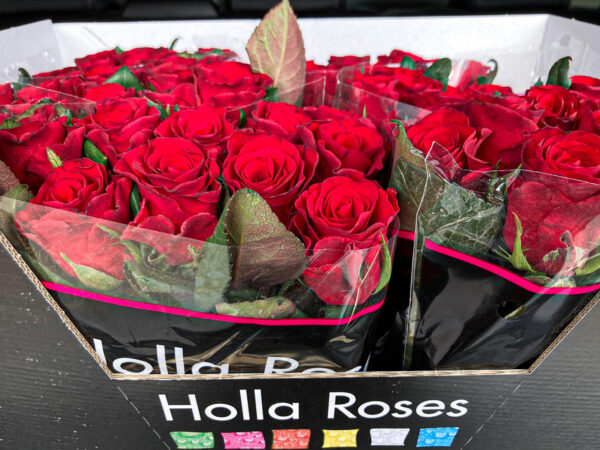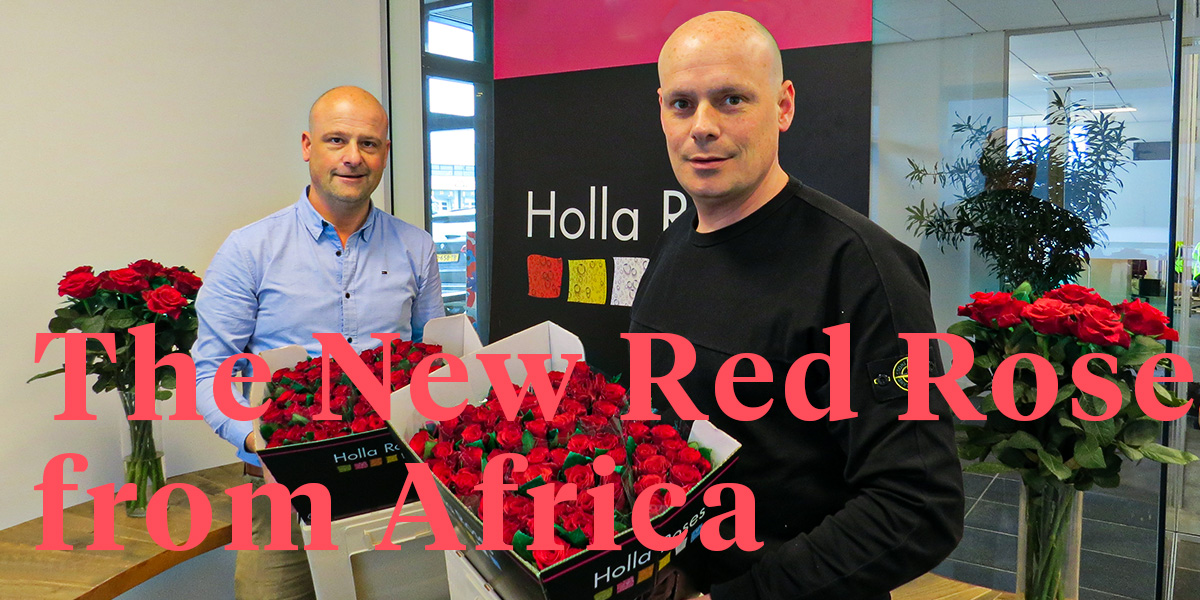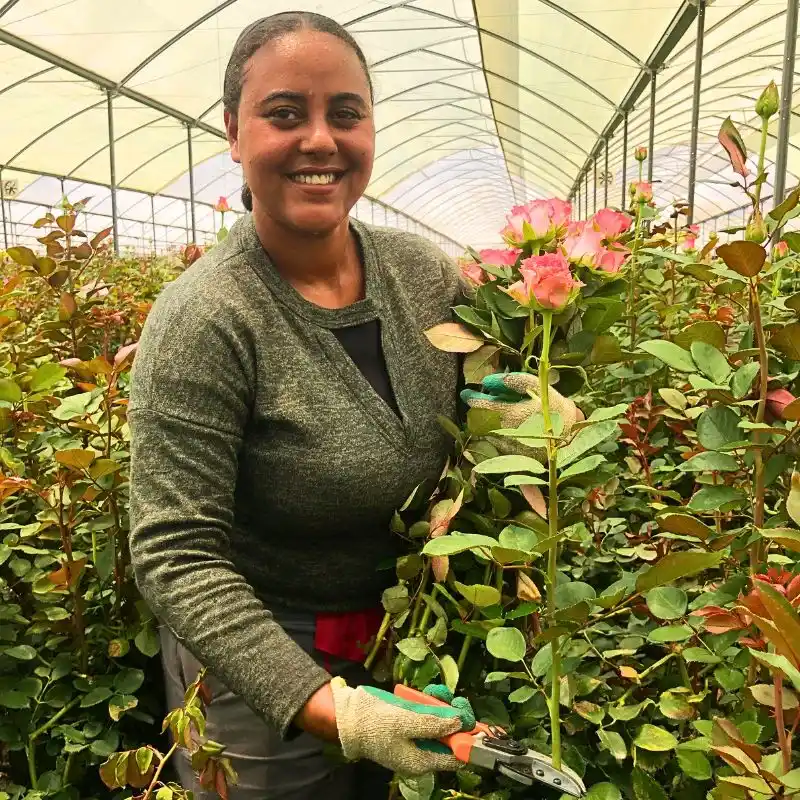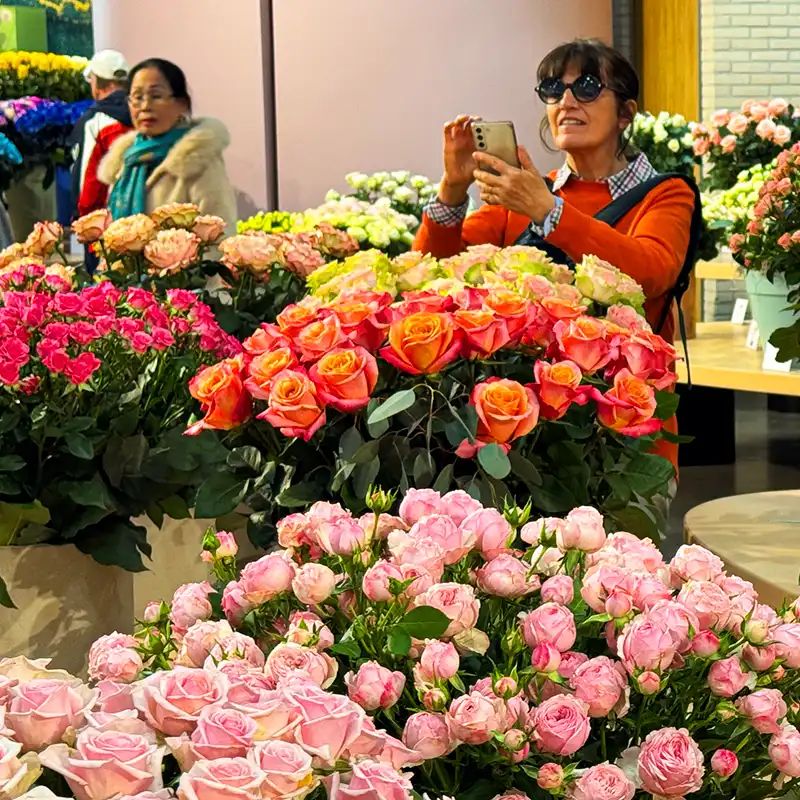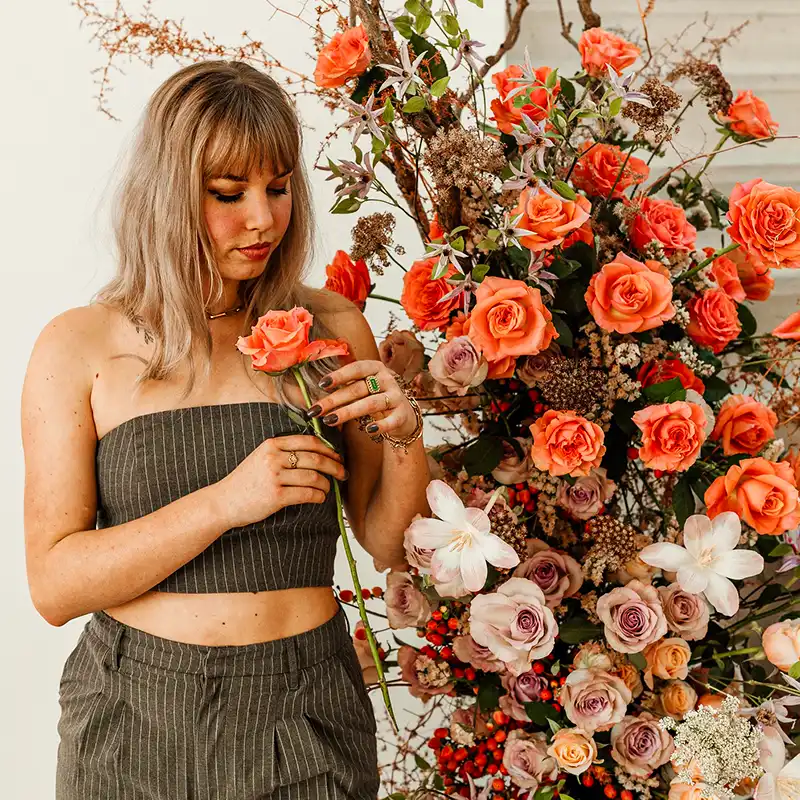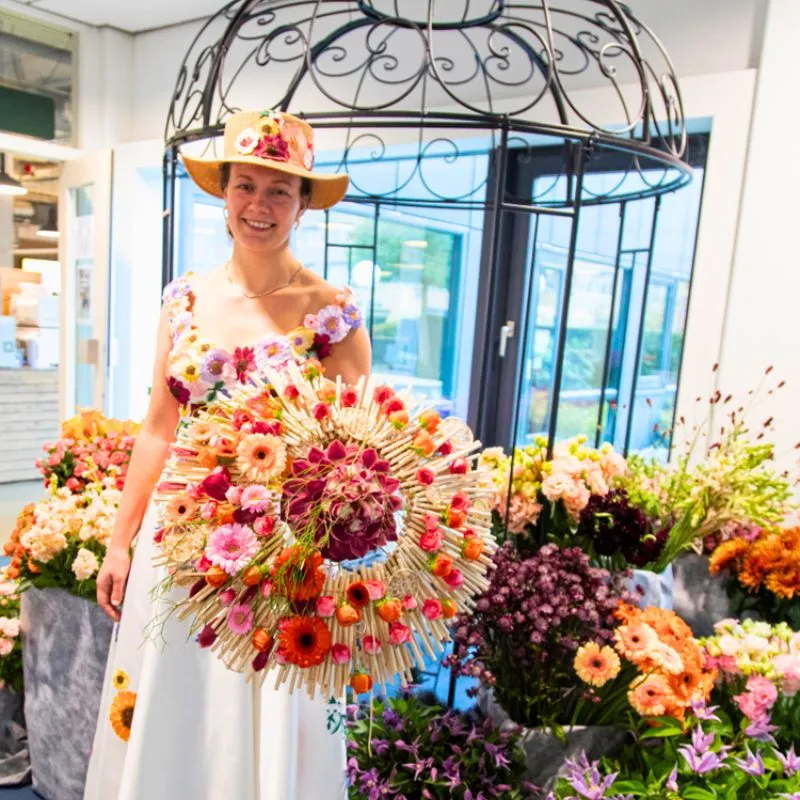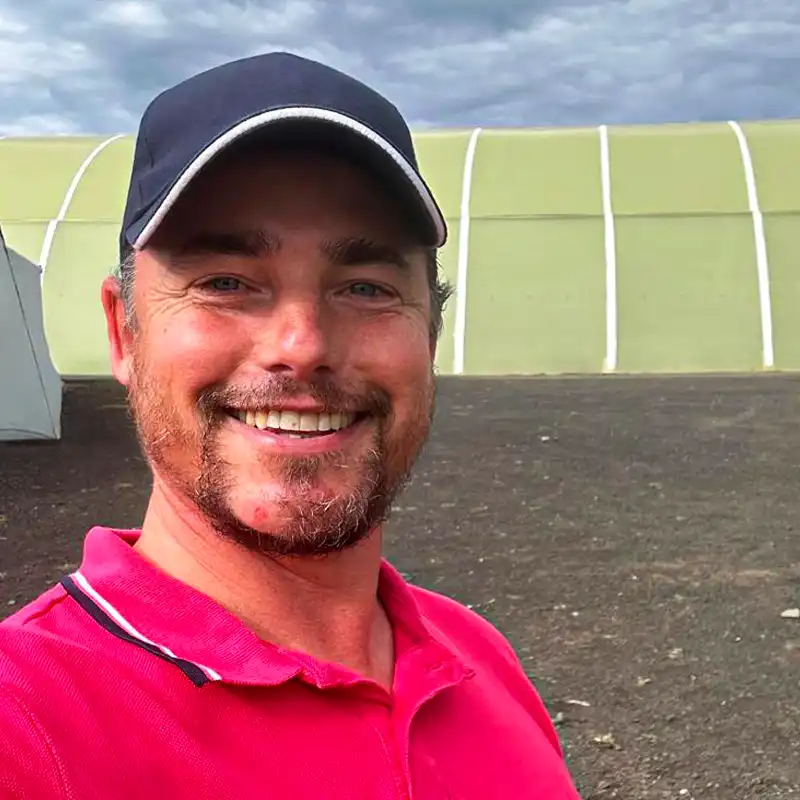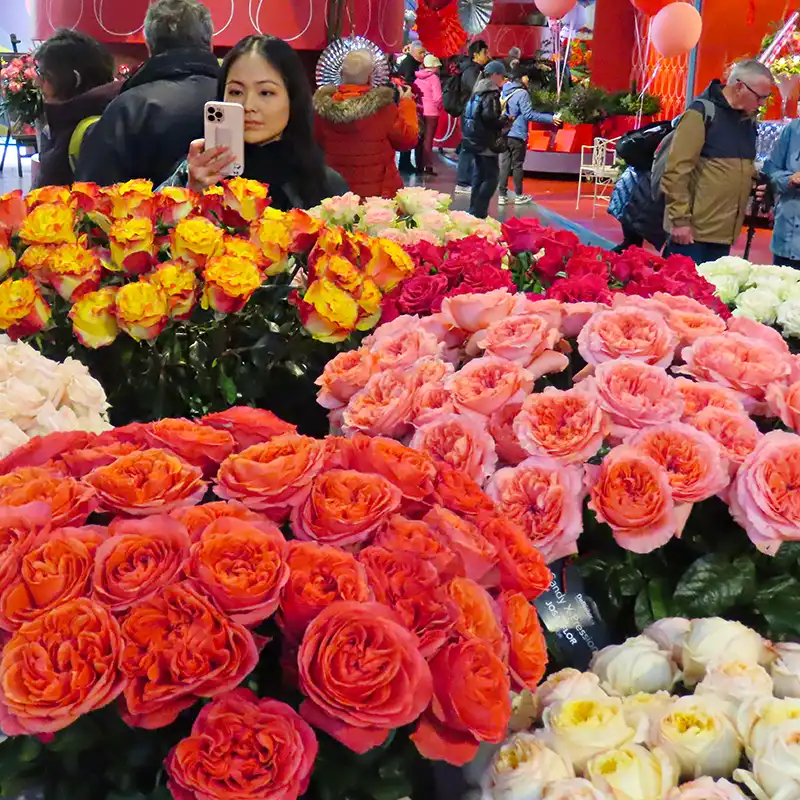Will it be a classic? Who knows. Rose Red Tacazzi+ has all the right specs for becoming one. Paul and Marc Holla, the owners of Ethiopian nursery and Dutch rose handling station Holla Roses have good reasons to dream that the mutant that popped up at their farm will be the next big red rose from Africa. They discovered Red Tacazzi+ and they are happy to tell you how.
The Famous Tacazzi+ Family
A new member of a famous family of Tacazzi+ roses will always draw attention, especially when it's a fiery red one. Let's read how two enthusiastic, yet very serious brothers feel about this novelty rose that they have started bringing to the Dutch auctions.
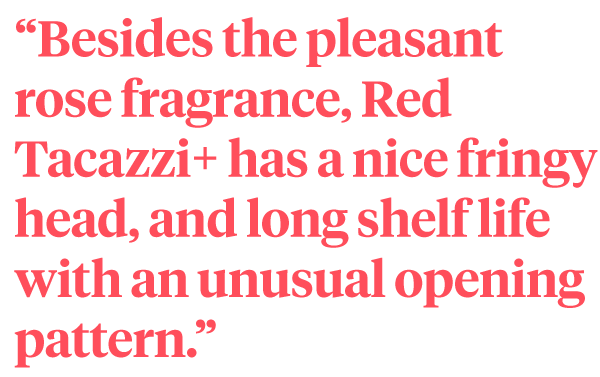 .
.
Growing Roses at Holla
What do you enjoy about the profession you have, about growing roses?
Paul:
"My brother Marc handles the farm in Ethiopia, while I manage our business here in the Netherlands." Marc: "The best thing about growing roses is to have your hands in the soil. We went back to the basics when we started our farm in Ethiopia. And we loved it. Doing our rounds at the farm, feeling the flowers, checking the moisture. I like to be among the roses as I did earlier when my father was growing them in Holland, and later in Ethiopia on a big scale; being a rose grower is about the feeling. It is a passion, my passion for life."
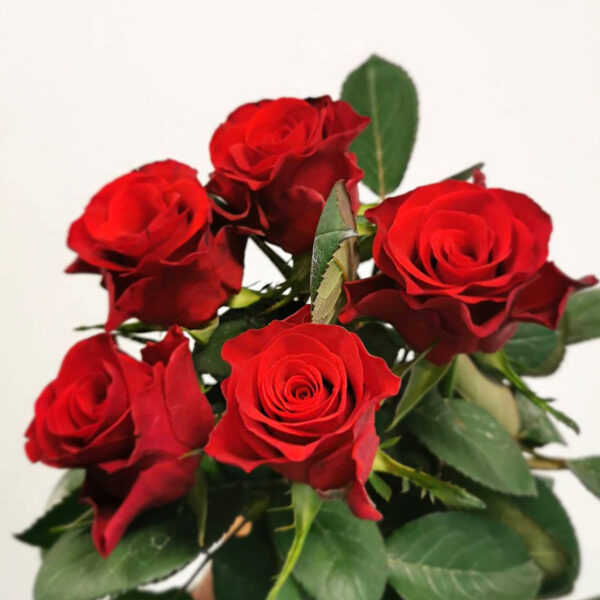
Tell us about the Holla Roses company, and about your move from Holland to Ethiopia.
Paul Holla explains:
“Holla Roses started in the Netherlands with 4 hectares of roses. In 2005 we moved to Ethiopia, starting with 27 hectares, adding another 17 hectares around 2009. We simply saw more possibilities in Africa than in the Netherlands. If you look at the labor cost and energy prices in the Netherlands in the previous decade, we think that we have made the right decision.” Marc adds: "There are big differences between growing roses in the Netherlands and Ethiopia. In Africa, we are not able to control climate as in Holland. You are dependant on nature, theater. The greenhouses are protected, but not climate controlled. There are significant advantages, though. The amount of daylight is year-round the same as you would have in Holland only on the longest day. The sun shines 12 hours a day, and the humidity is good." "Another difference is that in Ethiopia you do not just start a nursery. There is a big social responsibility towards the community, our workers. We had to learn all this. There was nothing in the village where we built the nursery in 2005. Nowadays we provide medical care, education, and sports facilities. All to create a safe and pleasant environment for our people. Besides the fact that we consider this our duty, it gives a lot of satisfaction."
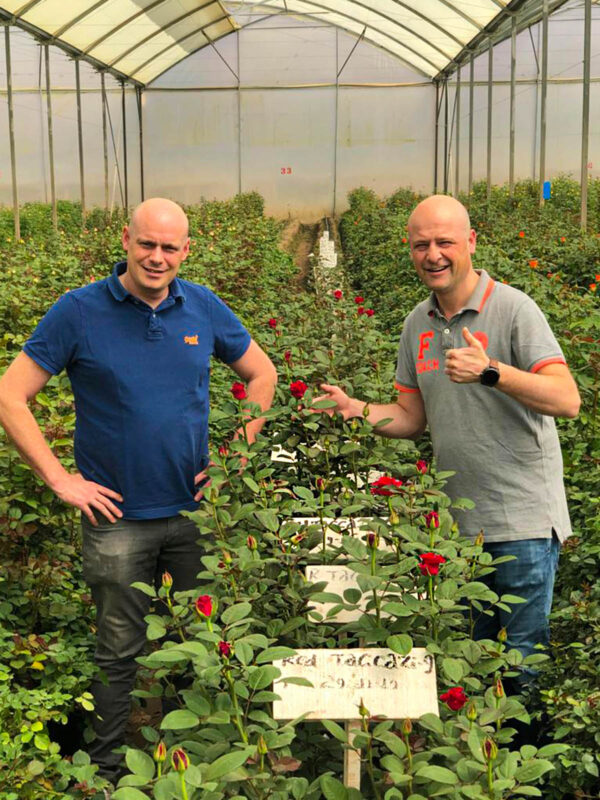
Tacazzi+ Varieties
How many varieties are you currently growing?
Paul and Marc:
"We have three varieties right now, and all Tacazzi+ varieties grow the same way. In 2015 we started with the 'normal' rose Tacazzi+, the cerise-colored rose. In 2017 we started growing rose Pink Tacazzi+. And the last addition was the Red Tacazzi+. In May 2021 we will have 3 hectares of these." Marc: "We like the Tacazzi+ because it is a rose with a scent. All varieties have this, and Red Tacazzi+ has an even stronger typical rose fragrance.
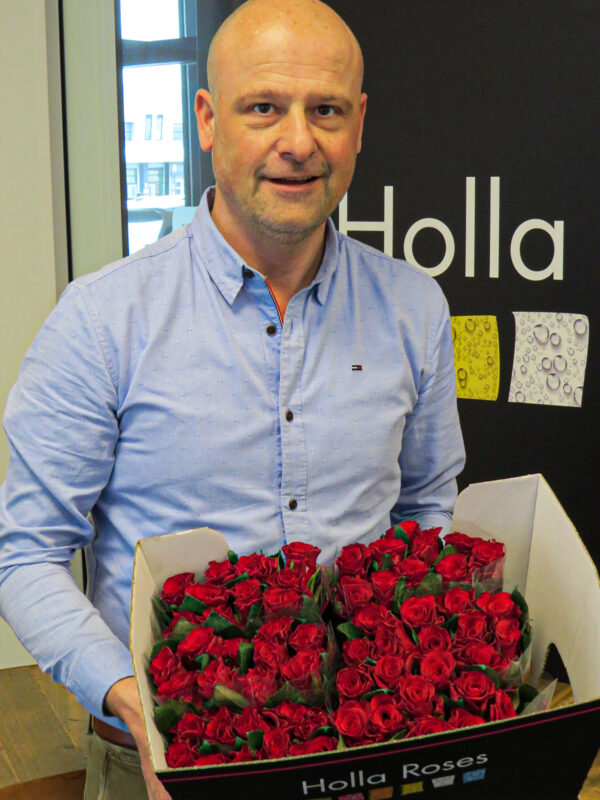
You discovered rose Red Tacazzi+. How did that happen?
Paul Holla:
"Red Tacazzi+ was found in the autumn of 2018 as a mutant from Pink Tacazzi+ by my brother Marc. We saw one single red flower amongst all these pinks, picked it out to be multiplied by breeder Dümmen Orange. Dümmen Orange managed to produce four stems, of which one turned back to pink and three stayed red. So, with the three remaining stems, we started growing, multiplying, and so on. This starts slowly; you multiply each plant by four all the time. Some turned back to pink again, but most stay red, and so on. That's how you multiply continuously. This May 2021 we expect to have 3 hectares of this variety at our nursery, also with longer stems up to 70 centimeters."
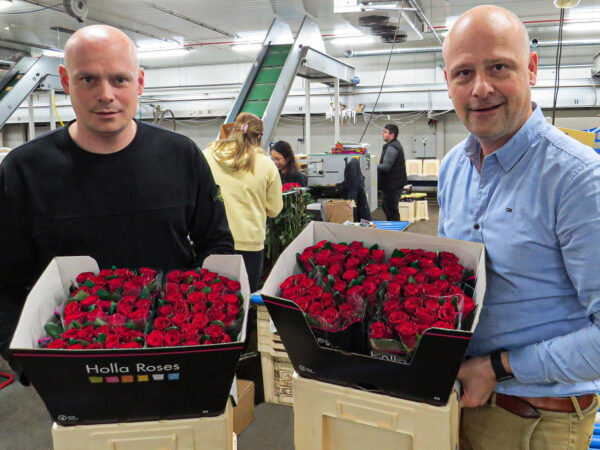
What do you think of rose Red Tacazzi+?
Paul:
"Besides the pleasant rose fragrance, a nice fringy head, and long shelf life with an unusual opening pattern. This rose does not explode or collapse during the opening stages. On the first day, it will open up just slightly. The next four, five days it will stay in this stage, perfect for display or in a florist store and easy to process in bouquets. For the traders, this is very handy since the roses will open up fully when the consumer has them at home. That's perfect."
Experiences So Far
What are your experiences so far with growing Red Tacazzi+?
Marc:
"Red Tacazzi+ is a very pleasant rose to work with. It does not have many thorns. The stem is quite thick, and the ratio between the stem and the bud is good. The production is normal for a rose, not particularly high, but the long shelf life compensates entirely for this.
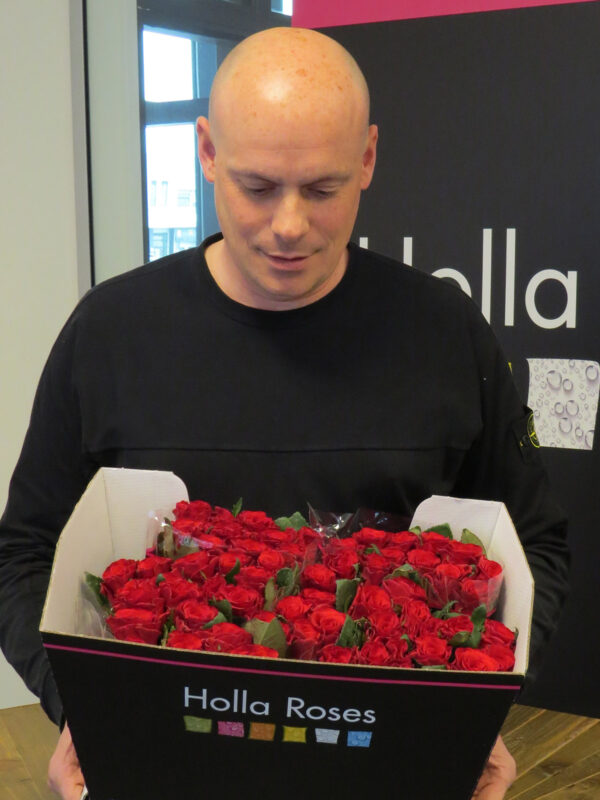
For which market(s) is Red Tacazzi+ suitable, do you think?
Paul:
"With this typical bouquet rose, we have a broad market. We aim at the high retail segment, ranging from the more luxurious supermarket to the florist. All Tacazzi+ varieties find their way to florists."
Support by Breeder Dümmen Orange
How does Dümmen Orange support you in promoting Red Tacazzi+?
Marc:
"For promotion, we are very happy with the role Dümmen Orange plays. One thing was finding a great red rose in Africa, sprouted from the high-quality Tacazzi+ family. Another thing is to present that rose to a worldwide audience. We want this rose to be the number one red rose from Africa, so we need Dümmen Orange to help us spread the word."
